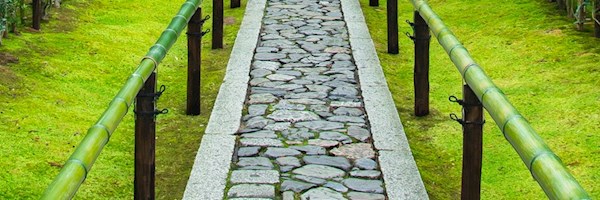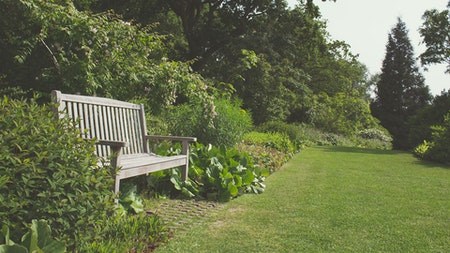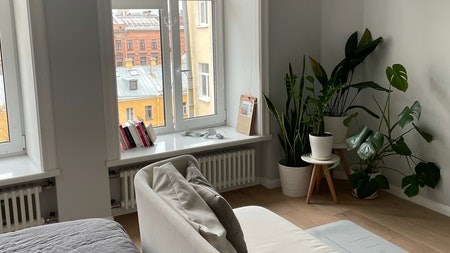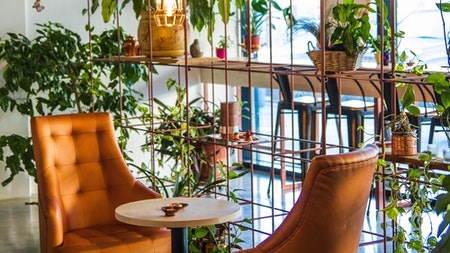When planting a tree in your garden, there are several things to consider. First, planting a tree is at least a 20 years investment, and you need to do some careful research before digging that hole.
According to Life Landscapes, the best time to plant a tree in South Africa is during March/April or August/September. However, the trees you buy from reputable nurseries should grow whenever they are planted, provided that they are suited to your region. They may take a little longer to establish themselves at other times of the year.
Categories
Before making a choice, it's essential to distinguish the different tree categories.
Endemic trees are native to specific biomes or regions. For example, the Kei white bauhinia (Bauhinia bowkerii) is endemic to a small area near the Kei River in the Eastern Cape. Endemic plants often look best during droughts and serve critical ecological services in their native regions.
Indigenous trees occur naturally in specific places or countries. For example, the Kei white bauhinia is indigenous to South Africa but is not endemic throughout the country. On the other hand, the Sweet thorn (Vachellia karroo) and wild olive (Olea europaea subsp Africana) are indigenous to South Africa, growing across different biomes and rainfall regions.
Exotic trees brought over - mainly in the colonial period - neither harm nor benefit the environment. Maple and frangipani trees are typical examples.
Invasive trees are harmful to local biodiversity, and it is illegal to plant them. They impair natural ecosystems; they take up too much water and spread uncontrollably. Mediterranean pines, Jacarandas and African tulip trees are invasive species in South Africa.
Small garden trees take up minimal space and only reach a certain height. Several shrub species make excellent small garden trees; they have a single stem if pruned.
Street trees can be used to line avenues and roadsides. These trees generally don’t leak sap, don't have invasive root systems and provide excellent shade with flat crowns.
Shade trees are often large trees referred to as lawn trees. They provide deep or dappled shade. These are particularly good for school playgrounds or in locations where livestock and wildlife use the tree for shade and shelter.
Foliage trees have large green leaves like the Natal wild banana. They are ideal for filling empty spaces in gardens.
Screen trees have large bushy crowns. Unfortunately, there are few indigenous screen tree species in South Africa, but some good screen trees include the wild olive and forest elder (Nuxia floribunda).
Fodder trees generally serve an ecological purpose for wildlife as they are an essential food source for game, livestock, insects and birdlife.
Ornamental trees have a statuesque shape and large celebrated flowers that are generally admired. Popular exotics like magnolias and jacarandas are good examples.
Questions to ask before choosing a tree
- How big will the tree get and will it be too big for my garden?
- What type of root system does the tree have, and will it damage the infrastructure where I want to plant it?
- Is the tree water-wise, and is it indigenous?
- Can this tree survive in my garden conditions?
Composition
Every tree consists of roots, a trunk, branches, leaves, pods or fruits, flowers, and some might have thorns. All of these features can have a significant impact on a garden.
Some trees have fibrous roots, such as fig (ficus) trees, which lift paving and damage infrastructure. However, trees with tap roots - known as dicots - are more popular garden specimens.
Most trees have single stems. The smaller shrubs tend to have multi-stems, but many can be pruned to grow with a single stem.
Trees have adapted to produce different crowns, so your choice will depend on your aim.
Crowns come in these profiles:
- Flat
- Columnar
- Fountain
- Weeping
- Pyramid
- Layered
- Round
Evergreen trees require less clearing of fallen leaves, whereas deciduous trees provide gorgeous autumn colours and free mulch for your soil. The indigenous Combretum species and pompom tree (Dais cotinifolia) are good examples of deciduous trees.
Flowers often make certain trees popular. Nectar-filled flowers attract sunbirds, and pollen packed blossoms bring bees to the garden.
Not all trees are fruit-bearing - some only bear seeds. Fruit trees will attract fruit-eating birds to the garden, but you may need to protect at least some of the fruit for your own use. Traditional fruit trees, like fig trees and lemon trees, are also useful in the garden.
Trees by region
Most indigenous trees can grow in parts of the country to which they are not endemic, but some are only suited to growing in certain conditions.
- The Western Cape is a winter rainfall area, and not all trees thrive in a wet winter climate.
- Southern Gauteng is prone to frost, which will kill most tropical trees from the East Coast.
- The Northern Cape and Free State are low rainfall areas, so only desert-adapted trees do well in these regions.
- Directly on the beach, large trees struggle to grow, whereas certain shrubs with adapted leaves can handle the salt from the sea.
Suitable trees for frost affected areas include:
Cork bush (Mundulea sericea)
Jacket-plum (Pappea capensis)
Lavender tree (Heteropyxis natalensis)
Drought-tolerant trees:
- Spekboom (Portulacaria afra)
- Chinese lantern (Nymania capensis)
- Cape ebony (Euclea pseudebenus)
- Camel thorn (Vachellia erioloba).
Trees suitable for winter rainfall areas:
African holly (Ilex mitis)
White pear (Apodytes dimidiata)
Tree fuchia (Halleria lucida)
Puzzle bush (Ehretia rigida)
Karoo boer-bean (Schotia afra).
Salt tolerant trees:
Yellow tree bauhinia (Bauhinia tomentosa)
Num num berry (Carissa macrocarpa)
Tree hibiscus (Hibiscus tiliaceus)
Umzimbeet (Millettia grandis)
Tassel Berry (Antidesma vensum)
Colours
Plant Cape chestnut (Calodendrum capense) and river indigo (Indigofera jucunda) for a pink palette garden.
For a red garden, choose Erythrina species, Natal bottlebrush (Greyia sutherlandii) and tree fuschia (Halleria lucida).
For a white palette – or moon garden - forest elder, Transvaal gardenia (Gardenia thunbergia) and common rothmania (Rothmannia capensis) are ideal.
Create a purple palette landscape with Tree Wisteria (Bolusanthus speciosus ) and cork bush (Mundulea suberosa).
For a yellow-themed garden plant, Yellow tree bauhinia (Bauhinia tomentosa), African wattle (Peltophorum africanum), African teak (Pterocarpus angolensis) and wild laburnum (Calpurnea aurea).
Planting
Whichever tree you choose, when planting it, always dig a square hole and not a round hole. One of South Africa's gardening experts, Keith Kirsten, advises that the hole should be at least 75 cm square and deep for most trees.
- Mix two-thirds of the topsoil with one-third compost in the bottom of the hole.
- Add one cup of bone meal or superphosphate and mix well.
- Place the tree in the centre of the hole and fill the sides with the rest of the topsoil.
- Tamp down well to ensure there are no air pockets.
- Stake young trees to prevent wind damage.
- Water regularly initially until the tree is established.
Then watch it grow into its new home.







